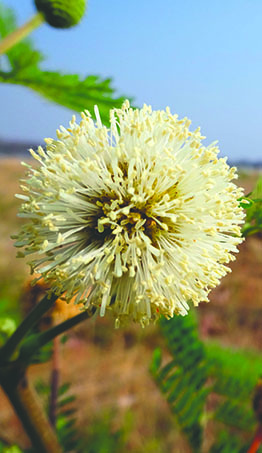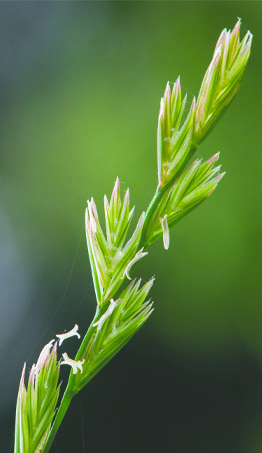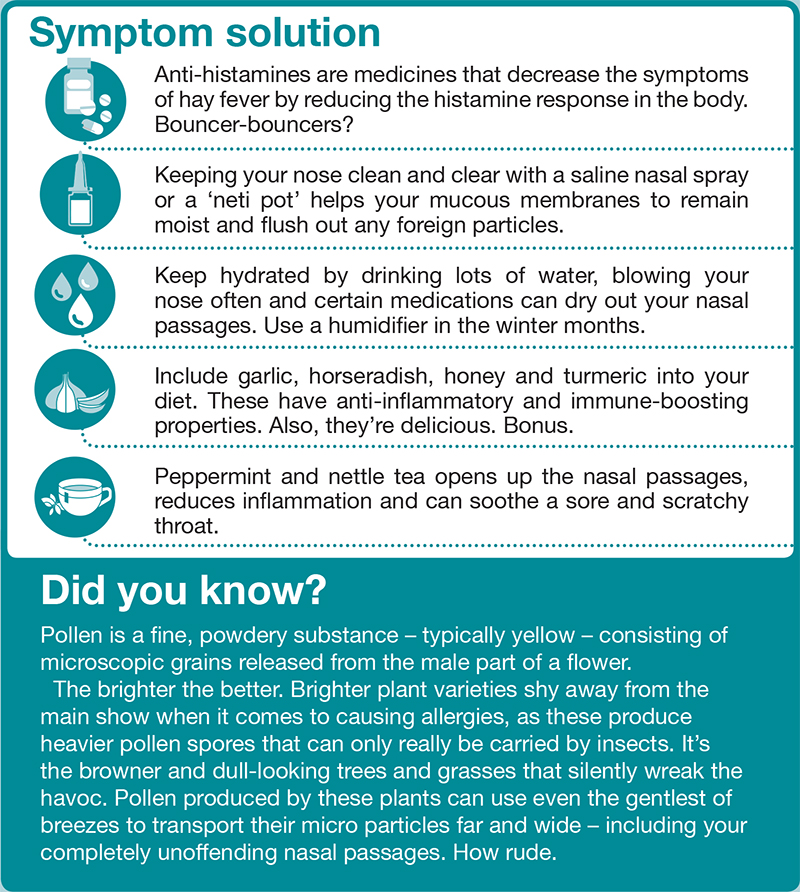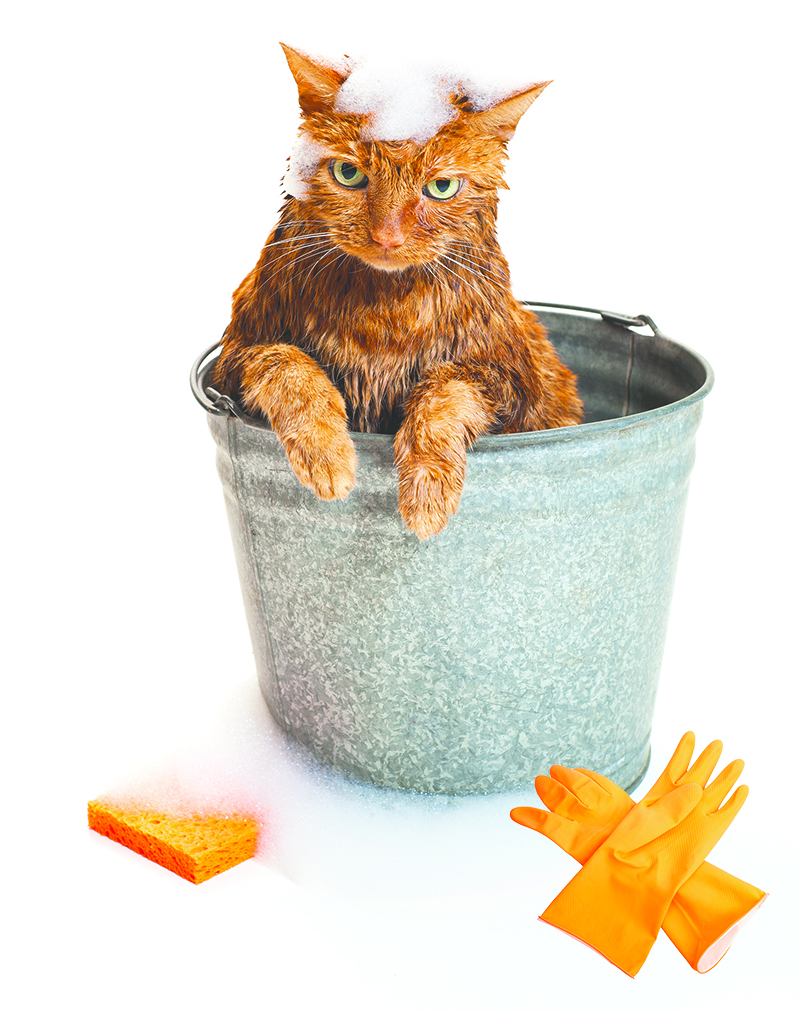Pollenoscopy
It is the mucus that binds us…
Flowering trees, grasses and
weeds often bring with them
runny noses, sneezing and
itchy eyes, commonly known
as hay fever or ‘allergic rhinitis’ (not
a stuffy rhino). The culprit? Pollen!
But before we label this the ultimate
enemy to our mucous membranes,
let’s have a closer look at some
interesting facts about pollen, its
link to allergies and a few possible
solutions.
Hay fever affects one in five
people. It usually begins in childhood
and appears to be more common
in boys. Pollen enters the upper
respiratory tract when you breathe
and stimulates your immune system to launch an attack against this foreign
invader.

Antibodies are released and our
white blood cells produce histamine. If
you imagine your body as a membersonly
club, histamines are the bouncers.
Histamines dilate the blood vessels
in your upper respiratory tract, which
results in a runny nose, itchy eyes and
coughing, basically to help get rid of
whatever’s bothering you.
But only in spring, right? Actually,
the pollen season lasts all year round
(hooray). It appears more prevalent
in the warmer months, but different
varieties of plants spore at different
times throughout the year. Mould can
be particularly pervasive in the colder
and rainy seasons.


Common offenders in South Africa include:
| Trees: | Cypress, Oak, Plane, Eucalyptus, Acacia, Port Jackson and Yellowwood |
| Grasses: | Johnson, Rooigras, Thatching grass, Kikuyu and Rye grass |
| Weeds | Goose foot, English plantain and Khaki weed Pollen can give us clues to the past and fossilised pollen allows paleobiologists to learn about extinct vegetation. |
Catfish

How to wash the furry ball of death razors that is your fearsome feline, Mr Piddles…
Our beloved household furballs are not immune to a pollen invasion. Just like you, Chairman Meow can also get irritating hay fever symptoms. After your kitty’s adventures in the garden (read murderous rampage followed by a nice relaxing dirt-bath), they can also bring pollen into your home. So keeping kitty clean becomes extra important if furry cuddles trigger more than just an emotional response. Washing your cat may not be top of your priority list, but keeping kitty clean will certainly help if there are allergies in the family.

